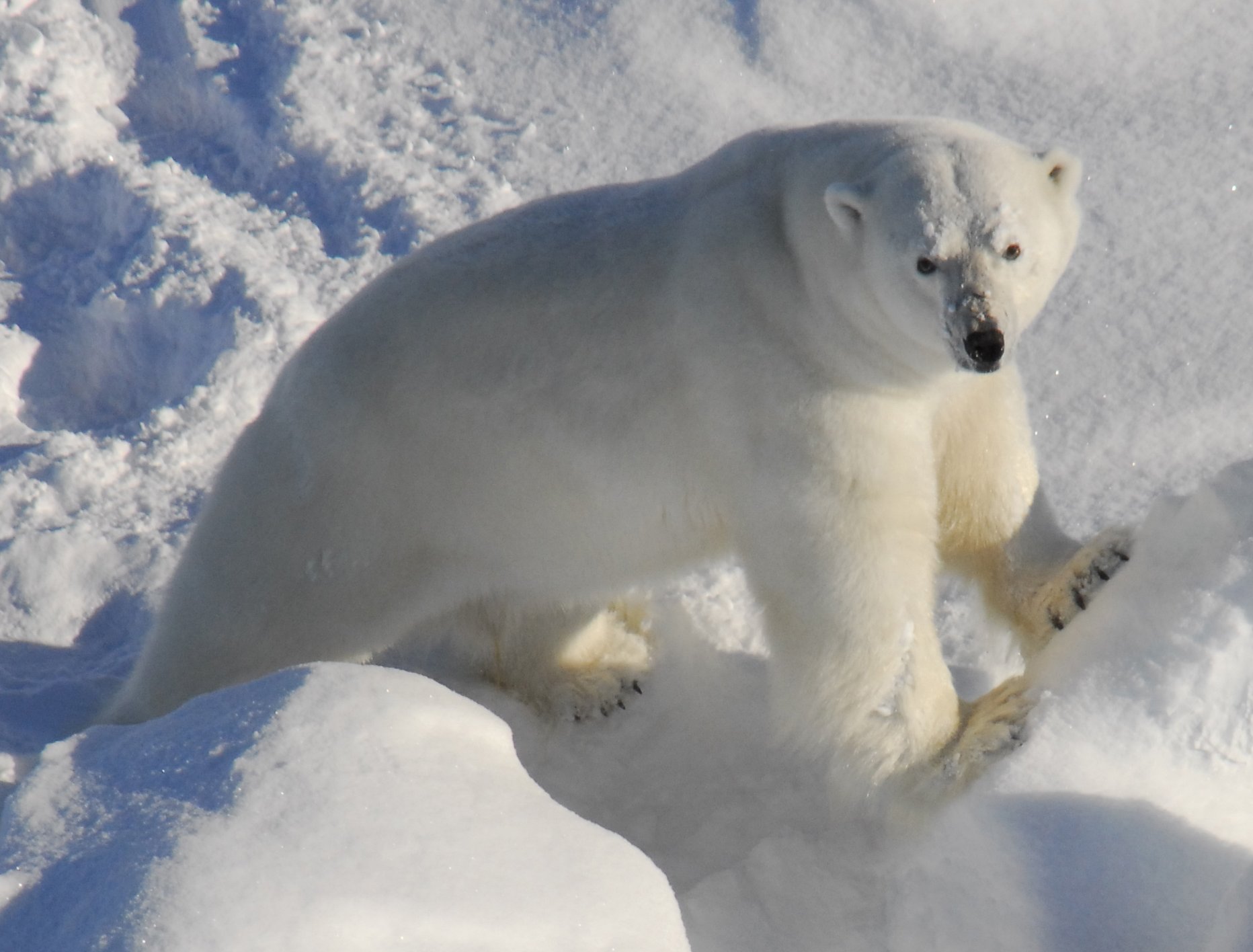PCB contamination threatens the population of polar bears
PCB contamination threatens the population of polar bears
 Photo: Rune Dietz
Photo: Rune Dietz
Text: Peter Bondo
Polar bear males accumulate large amounts of PCB in their body. This affects the bears' testicles that shrink in size, causing reduced fertility. The more PCB in the body, the smaller the testicles and the weaker the penis bone, and therefore less reproductive success.
Polar bear males peak between the age of 10 to 14. Here their mating success is highest and they easily outperform younger, older or smaller males. Regrettably, the largest males also have the highest levels of PCB in the body, and many of them therefore suffer from reduced fertility.
"There are several reasons why this is highly problematic for the population of polar bears," says Rune Dietz, co-author of a recently published article from the Arctic Research Centre, Aarhus University.
"Firstly, it takes longer time before a receptive female comes across a fertile male. Secondly, when more animals are fighting to win the female's favour, the largest males will often be able to outcompete other males," says Rune Dietz. And this is quite unfortunate as the largest males often have poorer reproductive abilities due to the hormone disrupting effects of PCB.
The relationship between the number of adult fertile males and the number of females is crucial for the size of the population, and the reduced number of pregnant polar bears can be explained by the high levels of PCB in the polar bear males.
The new study shows that there is a close relationship between the reproductive capacity of the polar bear population and male fertility and population size. Unfortunately, the effect is cumulative: the poorer the male fertility, the weaker the mating success.
In the recently published article, the researchers suggest greater focus on the reproductive capacity of polar bear males and evaluation of their fertility relative to the contamination with hormone disrupting chemicals and the ongoing climate change that are destroying their food sources
PCB is transported over long distances by air and sea currents from industrialised parts of the northern hemisphere to the Arctic. Here, it accumulates in the fatty and slow-growing marine food chains and is found in highest concentrations in polar bears, killer whales and humans. Although the use of PCB has been prohibited for the last 20-30 years, the levels remain stable, among other things because the climate change affects the dynamics of the food web and the fact that polar bears have started eating more contaminated seals (Greenland seals and hooded seals).
Contacts:
Senior scientist Jacob Nabe-Nielsen: + 45 2248 1210
Professor Rune Dietz: + 45 8715 8690
Read more
Pavlova V, Nabe-Nielsen J, Dietz R, Sonne C & Grimm V 2016. Allee effect in polar bears: a potential consequence of PCB contamination. Proceedings of the Royal Society B.





